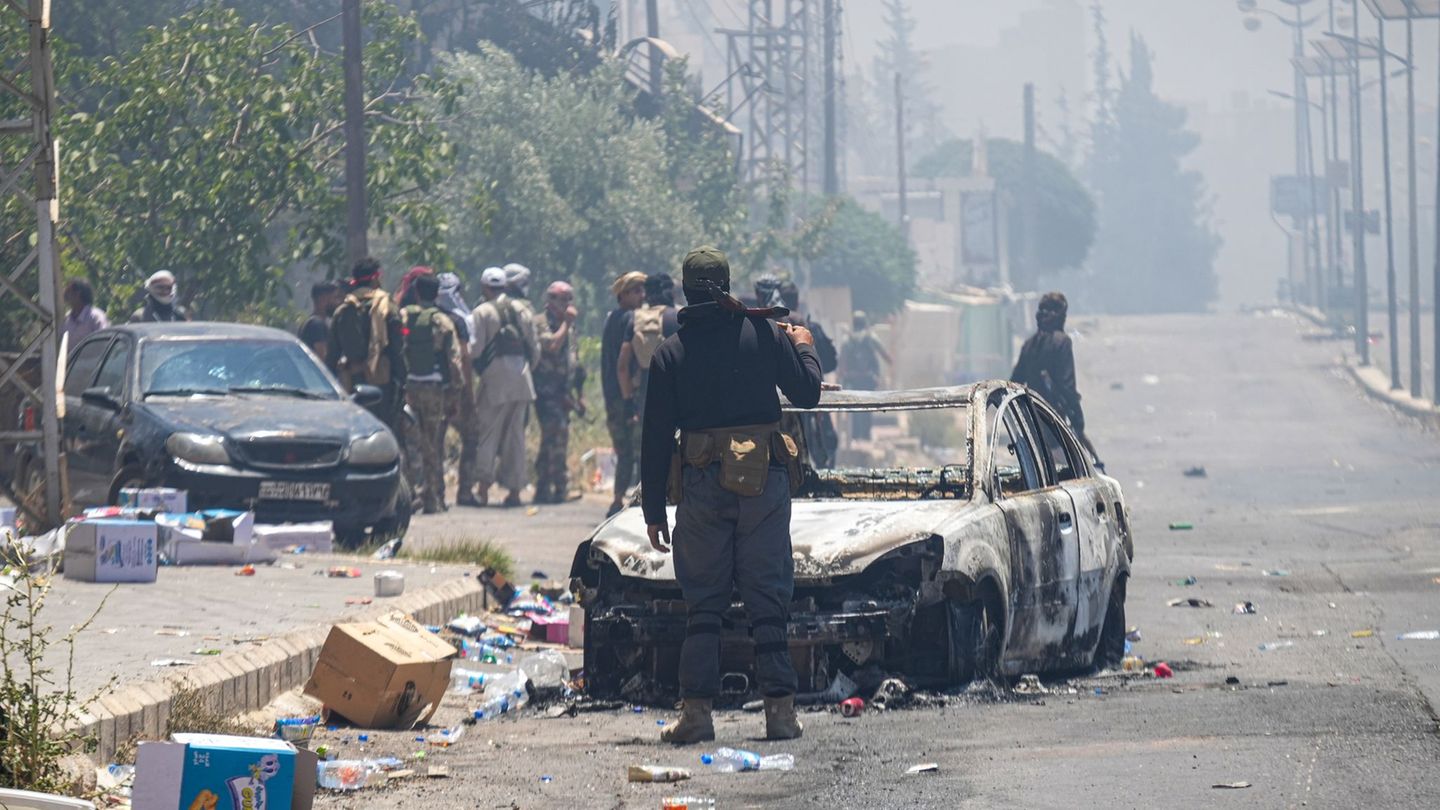Overthrown in 2003 following a US military invasion and executed in 2006, Saddam Hussein had palaces and public monuments built in his honor in ostentatious defiance of the Western embargo of the 1990s.
More than a hundred mansions, residences and presidential palaces scattered throughout Iraq show his megalomania and his delusions of grandeur. To some of them, Saddam Hussein went at most once or twice.
As if he were an emperor of Mesopotamia, his profile engraved in bas-relief, next to Nebuchadnezzar II, is still visible in his palace in Babylon (center).
“We could transform the palaces into museums, at least the one in Baghdad: a tapestry museum, for example, or about the royal family or Islamic art,” says Laith Majid Hussein, director of the Iraqi Council for Antiquities and Heritage.
But he admits that rehabilitating these “gigantic palaces” would require millions.
After 2033, most of these palaces were looted, some served as military bases for foreign troops, and almost all were badly damaged, a reflection of the violence that has rocked Iraq in recent years.
Today, the rehabilitated palaces are the exception. Others are in ruins or have been taken over by armed factions.
“The bureaucracy and corruption also make it difficult to restore these palaces to turn them into tourist places or heritage” of the country, he said.
In Baghdad, three palaces built by Saddam Hussein currently house the presidency and the prime minister’s office.
The sumptuous Al Faw complex, once used as a US military base, has been home to the “American University” since 2021. The place has impressive green areas and an artificial lake and also has auditoriums and a dining area in a stone and marble building.
The director of this private university, Michael Mulnix, does not hide his pride at seeing “the palace of a former dictator and ruthless man” converted into an institution of higher learning.
The main palace survived more or less intact, he said, but “all the other surrounding buildings were destroyed,” he explains.
“The windows were broken, there were birds flying inside, there were even snakes. We had to do a lot of renovations,” recalls the person in charge, pointing to the initials of Saddam Hussein, written in Arabic calligraphy, on one of the ceilings.
In Basra, to the south, three palaces remain. Two of them are used by the Hashd al Shaabi, a pro-Iranian paramilitary group currently integrated into the Iraqi security forces. The third was converted in 2016 into a prestigious museum of antiquities.
“We have managed to transform this image of the dictatorship into a symbol of culture,” said Qahtan al-Obeid, head of antiquities and heritage in the city.
Basra is the only Iraqi province that has “transformed a palace into a heritage building,” according to this expert, noting that Iraq has a total of 166 residences and mansions from the Saddam era.
“The Iraqi governments (since 2003, ndlr) have not built anything, they have not been able to reach the level of what was erected by Saddam”, affirms, nostalgic, an architect of that bygone era, without wanting to reveal his identity.
Laith Majid Hussein also says that in the province of Babylon, the authorities plan to convert a palace located near a UNESCO World Heritage ruins into a museum.
After years of neglect, the imposing palace, situated on an artificial hill, has its walls covered in graffiti and graffiti and the decorations, ceilings and walls are badly damaged.
“When we arrived in 2007, the site was in deplorable conditions. The authorities decided to make a recreation center for the inhabitants,” explains its director, Abdel Satar Naji.
The images of these palaces are even more impressive in Tikrit, Saddam Hussein’s hometown, north of Baghdad.
On the banks of the Tigris there are about 30 ruined mansions and residences. Nearby, a place reminds the inhabitants of the execution of hundreds of recruits at the hands of the Islamic State jihadist group in 2014. According to different balances, some 1,700 people would have been killed in the place.
Source: Ambito
David William is a talented author who has made a name for himself in the world of writing. He is a professional author who writes on a wide range of topics, from general interest to opinion news. David is currently working as a writer at 24 hours worlds where he brings his unique perspective and in-depth research to his articles, making them both informative and engaging.




